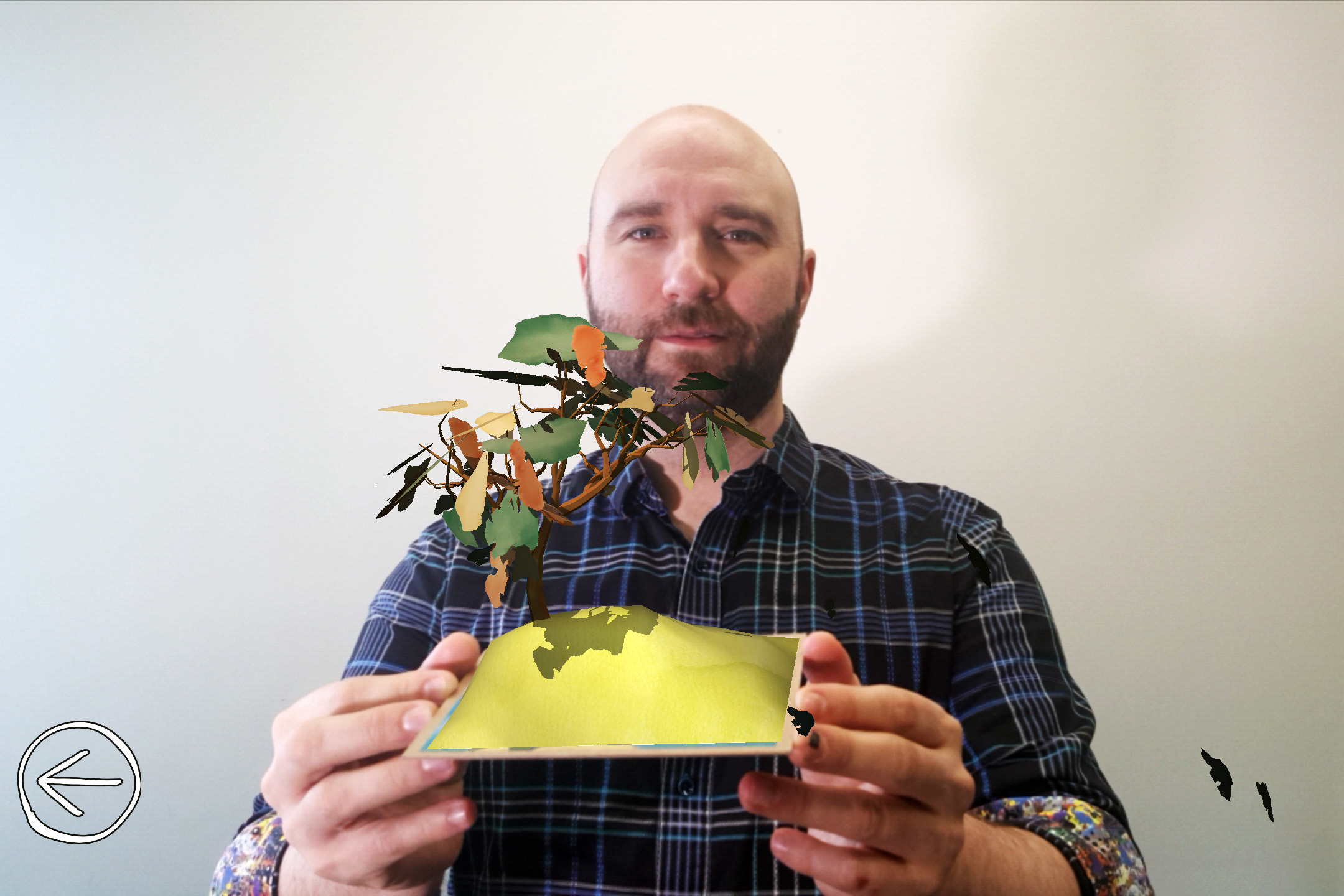
Alumnus uses augmented reality to enhance his artwork
Andrei Feheregyhazi (BFA’03, MFA’17) will create a room-scale immersive installation at PAVED Arts
By Shannon Boklaschuk
A University of Saskatchewan (USask) alumnus is fusing art and science into an innovative new project that will take shape at a local gallery.
Starting this month, viewers can go to PAVED Arts to experience the Augmented Reality Experiments created by Andrei Feheregyhazi (BFA’03, MFA’17). During the course of four months, he will work toward developing a room-scale augmented reality installation in which people can immerse themselves.
At four public viewings—to be held from 4-9 pm on Jan. 25, March 1, March 29 and April 26—members of the public can come out, walk through animated 3D spaces and offer feedback on Feheregyhazi’s work so that he can tweak and enhance the viewer experience. Feheregyhazi refers to the project as offering a “progressive experience” that will change over time. For example, the Jan. 25 event will set the stage, while he expects the April 26 event to be the most impressive.
“Augmented reality is anything that digitally enhances the real word,” said Feheregyhazi, citing the Yelp app, Pokemon Go and Snapchat filters as examples.
“They take reality and they shift or augment it, and so I’ve been doing that with art.”
To promote his project at PAVED Arts, Feheregyhazi created colourful artwork featured on hand-printed cards. To augment the cards, viewers can download the Brellabot AR app—which Feheregyhazi created—from Apple’s app store or the Google Play store. Once the app is downloaded and started, a smartphone camera can be pointed at the front of the cards to bring a tree image to life in 3D.
Feheregyhazi said there’s been a lot of positive reaction to what he’s doing.
“I don’t want that ‘wow factor’ at the technology—which I know is going to happen—but it’s more (about) enhancing the art experience,” he said. “I’ve been working in animation for a long time, and augmented reality basically enables me to create an animation that people can move through. So right now I’m working fairly simply with the animation, but I’d like to eventually, I think, make actual full narratives that people can move through with their phone or tablet.”
Feheregyhazi said what he’s doing is “still relatively new in the art world,” but he expects it to become more common in the years to come. He enjoys working in various mediums and pushing the envelope of what is possible, having previously explored film, animation, sculpture, painting, drawing and more. He even paired up with a machinist in the past to build what he refers to as a “hugging robot.”
“It was more a hugging machine—pedal-powered with gears and stuff like that. There was no electronics or anything,” he said. “So people stepped on the pedal and then it would hug them, so it was more a hugging machine—but I still like calling it a hugging robot.”
Feheregyhazi studied studio art through the Department of Art and Art History in USask’s College of Arts and Science. While he’s always had an artistic side—he started making art at the age of two—he also debated majoring in physics when he came to USask as an undergraduate student in 1998. However, after spending a lot of time drawing during his first year of studies, Feheregyhazi decided to focus on studio art while also retaining his keen interest in science and math.
It’s those diverse interests that make augmented reality his “jam,” he said, noting it allows him to experiment with science and technology as well as art. However, artists don’t necessarily need to have the tech skills that Feheregyhazi has to be able to digitally enhance their work.
“Collaborations are good, too, if you’re not an artist as tech literate,” he said. “But there’s a lot of crossover back and forth. I know there’s a lot of chemists who switch over to art, but they work with microscopic samples and things like that to make chemistry-based things.”
In addition to his new project at PAVED Arts, Feheregyhazi is attracting attention for a short film he created that enables viewers to take a journey through a miniature cardboard version of Saskatoon. The film, entitled Saskatoon: Where the Art Is, promotes the Creative City Summit that will be held later this year and features iconic Saskatoon landmarks and public artwork.
For Feheregyhazi, one of the best things about studying art at USask is the interdisciplinary nature of the College of Arts and Science and the opportunities he had to collaborate with students from across campus. When he was developing the hugging robot, for example, Feheregyhazi was able to talk with two mechanical engineering graduate students about his design.
“I love being on campus,” Feheregyhazi said, noting he took many courses outside of the Department of Art and Art History during his undergraduate degree, including religious studies and science classes.
“The thing I liked about the university setting, rather than an art college setting, is the varied experience of the student base.”


